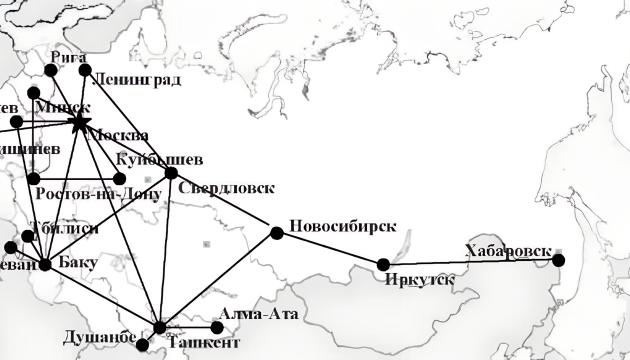Brief Summary:
Invention/Project: OGAS (National Automated System for Accounting and Information Processing).
Visionary/Leader: Academician Viktor Mikhailovich Glushkov.
Country: USSR.
Development period: 1960s - 1970s.
Essence: A project to create a unified nationwide computer network for collecting and processing economic data and managing the economy.
A visionary yet unrealized megaproject. Failed due to bureaucracy, high costs, technological challenges, and lack of political will. An important lesson about systemic barriers to technological progress.
History of Creation
In the 1960s, as the Soviet planned economy grew increasingly complex and its management became more cumbersome, Academician Viktor Mikhailovich Glushkov, director of the Institute of Cybernetics of the Ukrainian SSR Academy of Sciences, proposed a revolutionary idea. He realized that traditional paper-based methods of data collection and processing were inadequate for effectively planning and managing an economy on the scale of a vast country. His proposed solution was the National Automated System for Accounting and Information Processing (OGAS). Glushkov actively promoted the project at the highest levels of government, believing it was vital for the future of the USSR.
How It Was Supposed to Work
OGAS was conceived as a hierarchical three-tier computer network. The lower level would consist of computing centers at large enterprises and organizations, collecting primary data. The middle level would include regional centers aggregating and analyzing data locally. The highest level would be the main center in Moscow, processing nationwide data for central planning (Gosplan, the Central Statistical Administration, etc.). All levels were to be interconnected via communication channels, forming a unified information system. The plan involved using cutting-edge (for the time) computers and developing highly sophisticated software for economic analysis and plan optimization.
Claimed Advantages
Supporters of OGAS (primarily V.M. Glushkov) saw it as the key to improving the efficiency of the entire Soviet economy:
- Significantly faster collection and processing of economic data.
- Real-time analysis of the national economy.
- More accurate planning and forecasting.
- Optimized resource allocation, reducing waste and inefficiency.
- Reduced bureaucracy and paperwork through digitization.
- Ultimately, strengthening the planned economy and ensuring its superiority over capitalism.
Why Did It Fail?
The full-scale implementation of OGAS never materialized for several reasons:
- Bureaucratic Resistance: The biggest obstacle was fierce opposition from ministries and agencies, particularly Gosplan and the Central Statistical Administration. They feared losing control over information flows, their authority, and the ability to hide inefficiencies.
- Enormous Cost: The project was estimated to cost billions of rubles—comparable to major defense programs. Under budget constraints, securing such funding for a "civilian" project proved impossible without top-level political backing, which gradually waned.
- Technological Challenges: Despite Soviet cybernetics advancements, creating a reliable, scalable nationwide network, unified standards, and complex software was extremely difficult with the technology of the time.
- Interdepartmental Fragmentation: Instead of supporting a unified system, agencies began developing their own incompatible automated management systems, diluting efforts and resources.
- Ideological Distrust: There was lingering skepticism about cybernetics and concerns over granting machines too much influence in governance.
Ahead of Its Time?
Absolutely. The OGAS concept was far ahead of its time, particularly in proposing a unified national information network. In many ways, it was a prototype of the modern internet, adapted for economic management. The technology of the 1960s (computers, communications) was insufficient for such an ambitious project, but the primary barriers were organizational and political, not technical.
Could It Be Revived?
Literally? No. OGAS was designed for a specific economic and political system—the USSR's planned economy. However, its ideas and lessons remain highly relevant today. They apply to government information systems, digital governance, interagency coordination, data standardization, and overcoming bureaucratic resistance to change. The OGAS experience proves that large-scale digital systems require not just technology but also political will, coordination, and systemic readiness for transformation.
WTF Factor
The biggest WTF moment with OGAS is realizing that this grand vision of an "internet for the economy"—which supporters believed could have propelled the country forward—was killed not by technological limitations but by officials' fear of losing power and control. The prospect of a system making their work more transparent and efficient was less appealing to many than maintaining the status quo. The irony? A technologically lagging planned economy could have gained a powerful tool for efficiency, but the system itself rejected it.


